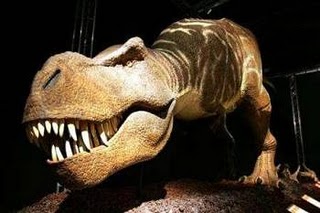Asteroid family blamed for killing dinos ‘not the culprit’
 Washington, Sept 20 : Data from NASA's Wide-field Infrared Survey Explorer (WISE) mission suggest that the family of asteroids believed to be responsible for the death of dinosaurs is not likely the culprit.
Washington, Sept 20 : Data from NASA's Wide-field Infrared Survey Explorer (WISE) mission suggest that the family of asteroids believed to be responsible for the death of dinosaurs is not likely the culprit.
While scientists are confident a large asteroid crashed into Earth approximately 65 million years ago, leading to the extinction of dinosaurs and some other life forms on our planet, they do not know exactly where the asteroid came from or how it made its way to Earth.
A 2007 study using visible-light data from ground-based telescopes first suggested the remnant of a huge asteroid, known as Baptistina, as a possible suspect.
According to that theory, Baptistina crashed into another asteroid in the main belt between Mars and Jupiter about 160 million years ago.
The collision sent shattered pieces as big as mountains flying. One of those pieces was believed to have impacted Earth, causing the dinosaurs' extinction.
Since this scenario was first proposed, evidence developed that the so-called Baptistina family of asteroids was not the responsible party.
With the new infrared observations from WISE, astronomers say Baptistina may finally be ruled out.
"The original calculations with visible light estimated the size and reflectivity of the Baptistina family members, leading to estimates of their age, but we now know those estimates were off," said Lindley Johnson, program executive for the Near Earth Object (NEO) Observation Program at NASA Headquarters in Washington.
"With infrared light, WISE was able to get a more accurate estimate, which throws the timing of the Baptistina theory into question."
The scientists calculated the original parent Baptistina asteroid actually broke up closer to 80 million years ago, half as long as originally proposed.
"This doesn't give the remnants from the collision very much time to move into a resonance spot, and get flung down to Earth 65 million years ago," said Amy Mainzer, a study co-author and the principal investigator of NEOWISE at NASA's Jet Propulsion Laboratory (JPL) in Pasadena. Calif. (ANI)